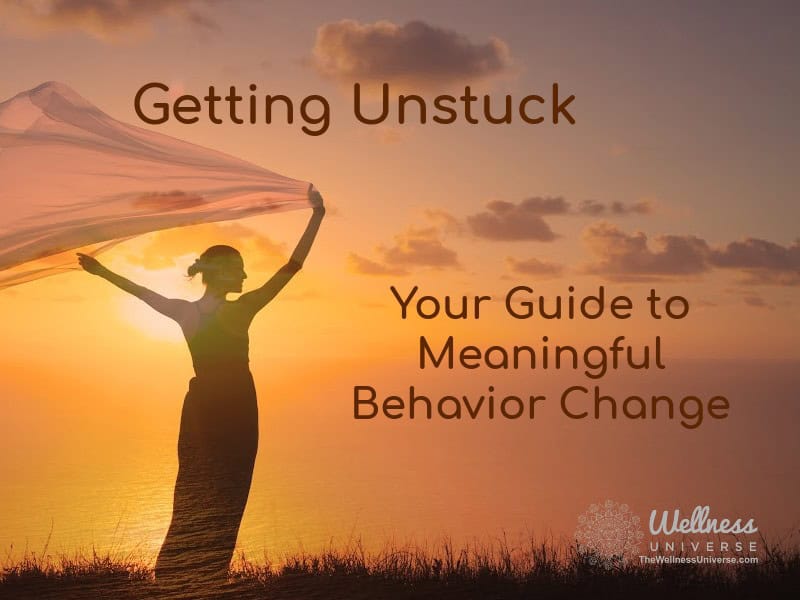“How are you feeling right now?”
“I feel abandoned. All I want him to do is listen to me and hear my side of the story. He won’t. He always walks away from me when I need to talk.”
“Okay, I understand that, and that also didn’t answer my question. How are you feeling right now?”
“I’m feeling rejected and ignored. Every single time we have an issue that requires communication, he walks away from me, and he never listens to my side of the story. Once he’s had his say, he just walks out. Why won’t he show me the same courtesy I show him and listen to me?”
“I don’t know. Let’s focus on you. How does your body experience feeling abandoned, rejected, or ignored? How would you describe those sensations?”
“It feels crazy because I just want someone to listen to me. I feel like I’m going insane sometimes. I just can’t understand why it’s so hard to get people to listen to me.”
“Do you think I’m listening to you right now?”
“Yes.”
“How do you know?”
“You’re responding and asking me questions.”
“Are you listening to yourself right now?”
“What?”
“Are you listening to yourself in context to our conversation?”
“Yes. I’m telling you about how he won’t listen to me and it’s causing a major hurdle in our relationship.”
“That’s true. You are telling me about that situation. And, you still haven’t answered my question.”
“What question?”
“How are you feeling right now?”
This type of conversation happens in my office often, especially with new clients who aren’t used to the way I practice.
One of the biggest tripping points in our society is that it’s perfectly acceptable to get wrapped up in a perception.
We love to validate perceptions, because that’s where the juicy gossip and the dramatic details are found. When we get stuck in a perception, it’s easy to suppress and ignore the emotions and sensations (aka, the feelings) that underlie that perception.
What exactly is a perception?
Good question! In this sense of the word, a perception is a way of regarding, understanding, or interpreting something; a mental impression.
Where do our perceptions come from?
Even better question! Our perceptions stem from life events that were so emotionally significant that they left imprints on our nervous systems. Some of these events conjure feel-good feelings of renewal and rejuvenation that we like to qualify as “positive.” Other times, these events imprint feelings that drain and deplete us—the so-called “negative” ones.
Let’s drop the labels of negative and positive when it comes to sensations and emotions. ALL feelings have value. It’s not the feeling that’s the problem. It’s how you interpret it and what you choose to do with it that’s creates a problem.

By adding a layer of perception over a feeling, it makes it easier to justify in your own mind the suppression, avoidance, or projection of that feeling.
Refer to the conversation above. The client keeps inserting a perception into the answer without answering the question. She doesn’t describe a sensation or an emotion. She never says, I feel angry, I feel sad, or I feel scared, all of which are emotions that could feasibly fit the scenario. Nor does she accurately describe a sensation. She didn’t describe tightness, constriction, throbbing, butterflies in the stomach, a racing heart, sweaty palms, or any other bodily sensation. She could only connect with her perceptions, overlaying them as feelings. This is a subtle, sneaky way we keep ourselves trapped in the stories we tell ourselves. It’s a stealthy way we stay in victimhood and abdicate responsibility for our part in a situation, relationship, or life event.
It’s easier for my client to place blame on her partner for abandoning her, rejecting her, ignoring her, and not listening to her than it is to experience the painful feelings that may surface. It also implies that someone is to blame, and it’s certainly not going to be her.
In our culture, it’s reinforced that someone is to blame.
The scapegoat allows us to go about our business each day believing that we’re not part of the problem. We somehow think if we can pinpoint a cause or a problem, then nothing like that will happen again, and there’s a lot of fallacy in that type of thinking.
Because we’re so accustomed to the “blame and shame” approach to life, we have become masters at doing it to ourselves. This is one of the biggest ways we sabotage and keep ourselves stuck.
Why do we do this?
Excellent question. It all goes back to childhood and those events that are so emotionally significant that they leave an imprint.
As we progressed further into the program, this client connected with an experience she had at age 4 when her mother was hospitalized for several weeks. No one explained to her what was happening, she didn’t fully understand why she was suddenly living with her grandparents, and she was terrified. What happened in her family is what happens in a lot of families—in order not to upset the kids, let’s not tell them what’s really happening.
We’re learning that approach has lifelong repercussions.
As a 4-year-old, she experienced fear, anger, and shame; and she had no one to talk to. At that young age, she couldn’t articulate her feelings; none of us can at age 4! Instead, we act them out. Think about this: how many times in your childhood did you get in trouble for acting out your feelings? THIS is why we develop compensatory, defensive, and coping behaviors such as blaming, scapegoating, and deflecting attention away from ourselves.
Those moments are so emotionally painful to a 4-year-old child that she will start suppressing her emotions. This isn’t a conscious choice. The cerebral cortex of a child isn’t finished developing at age 4, so the logical, rational mind isn’t the one that’s making the decisions. A child only has a subconscious mind at age 4, and that’s the mind of the body, cellular, and tissue memory. That mind does not communicate in words. Her subconscious mind left an imprint on her nervous system in the language of sensation and emotion, and her body will react with those same feelings in the future if it perceives a similar threat.
As the child grows and the conscious mind enters into the mix, the voice of the ego (the mind-chatter inside our heads) will eventually assign a meaning to those feelings. In the case of my client, the meanings her ego-mind assigned to those sensations was ignored, abandoned, and rejected. She is now unable to distinguish for herself the difference between the feeling and the perception. Her perceptions weren’t the reality of her current situation with her partner, and her pattern had such a hold on her that it took a while to get to the bottom of that one.
This is why it’s important to distinguish between a feeling and a perception.
The meaning your egoic mind assigned to those uncomfortable feelings stays with you throughout your life as long as you remain unaware of it. Once you become aware of your own subtle patterns, you can choose to change those habits of thought and behavior, taking back control of your life.
– Jennifer

You deserve a SoulTreat! Join 18 amazing WU World-Changers for feel-good workshops, talks, and a SoulTreat Fair. Learn more and get your tickets here: https://wusoultreat.com

Find great products and services for your well-being from members of The Wellness Universe!
Jennifer Whitacre is an Empowerment Strategist, host of the Yes, And… Podcast, and an author who helps her clients find their unique Life GPS System. It’s her mission to educate & inspire people so they can shift their focus, get unstuck, and move forward in life.


